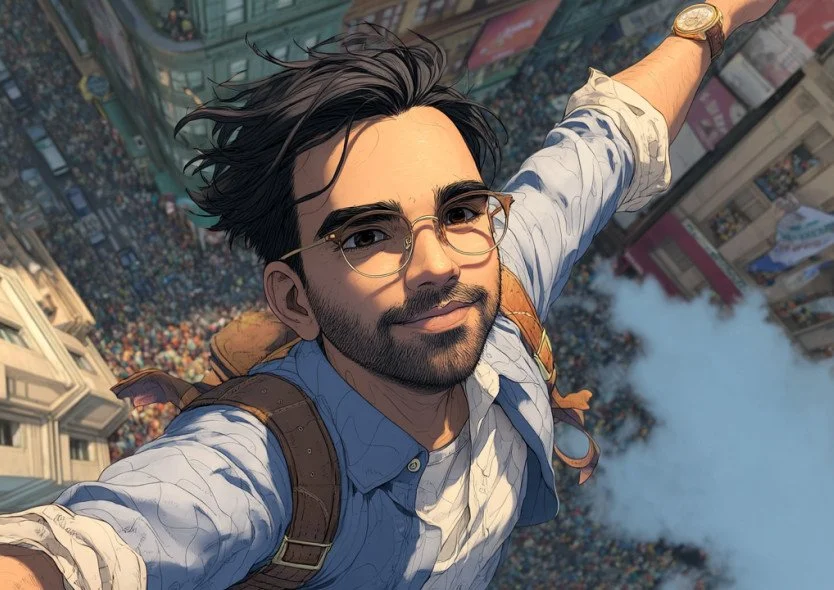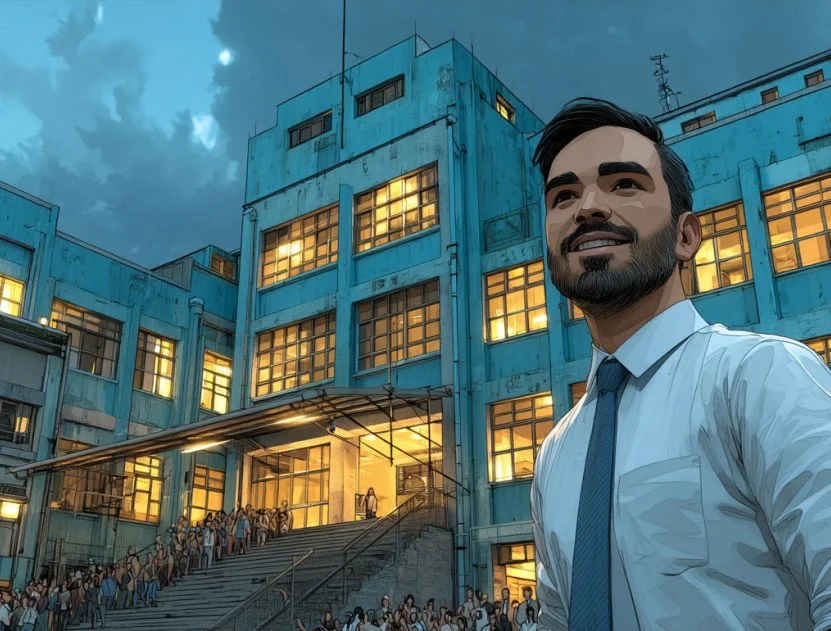Zohran: A Cause For Art
The Crisis of the Creative Frontlines
Greetings Warriors!
Today I step into the breach, sword unsheathed and banner raised, to chart how the policies of Zohran Mamdani offer not just relief, but a fighting chance for the liberal arts and cultural sector in New York City. The terrain is rough: venues shuttering, studios silenced, creative voices pushed to the margins. You know this battlefield — I’ve walked it with you in my article “When the Storm Hit the Art Market”. Let’s map how Mamdani’s platform can shift the contours of this war, and why as warrior-creators we must know the policy arms in our arsenal.
In the downtown lofts, the borough studios, the fringe performance halls — the war-drums have long been pounding. I chronicled in “When the Storm Hit the Art Market” how rising rents and overheads forced arts organisations and independent venues to shutter. The landlords didn’t just raise prices — they changed the game. One moment you’re hosting open-mic nights, residencies, gallery pop-ups; the next your lease is terminated, your space converted to luxury housing, your ghosts echo where once came laughter and raw creation.
This is not ancillary. The liberal arts are the city’s soul-forge. When they fall, the city becomes sterile. So when Mamdani pledges to freeze rent for rent-stabilised units, build deeply affordable housing, and crack down on bad landlords, that’s not simply social policy — it's a defence of our creative warriors’ base camp.
This is not ancillary. The liberal arts are the city’s soul-forge. When they fall, the city becomes sterile. So when Mamdani pledges to freeze rent for rent-stabilised units, build deeply affordable housing, and crack down on bad landlords, that’s not simply social policy — it's a defence of our creative warriors’ base camp.
For the venue operator, the independent theatre troupe, the gallery owner — affordable housing means fewer dollars siphoned into overhead, fewer sleepless nights wondering if next month will be “make or break.” In a city where rent eats ambition, putting a cap on that beast is a move worthy of the warrior’s code.
BUY MY ART🖤
Housing Stability = Creative Possibility
Mamdani’s housing plank reads like a siege-plan on displacement: freeze rent on over a million rent-stabilised units, build 200,000 new permanently affordable units in the next decade, create an Office to Protect Tenants.
So what does that mean for the arts sector? I’ll spell it out:
Artists, creatives, small orgs live on razor-thin margins. A spike in rent means a pivot from creation to survival. When studios vanish, art deserts expand. Housing stability gives the artist-warrior a stronghold from which to fight.
Venues and cultural spaces often lease in transition neighborhoods. If those areas become unaffordable, the next wave of developments pushes them out. A policy that slows displacement preserves cultural infrastructure.
Neighborhood cultural ecosystems: When working-class artists are displaced, entire creative communities vanish. Tenants’ protections and stabilisation maintain the human ecosystem necessary for vibrant arts.
Relief for overhead: Lower rents for creators means more resources for production, programming, outreach — not simply paying the landlord.
In short: housing becomes the foundation, the fortress from which creative battle is conducted.
Public Investment & New Cultural Infrastructure
Beyond housing, Mamdani’s agenda reaches into public investment, affordability of transit, food, and general cost-of-living.
Here are the implications for art spaces and cultural actors:
City-owned infrastructure: When the public sector builds or supports spaces, the cultural sector may gain access to non-market venues. Schools turned green hubs, neighborhood public buildings, community centres with art-friendly space — all become possible under a pro-investment regime.
Free or low-cost transit: More accessible visitor access to performance halls, galleries, cultural events. More audience mobility means more foot-traffic for cultural goods.
Affordability across the board: When housing, transit, food become less of a burden, arts orgs are less bogged down by what economists call “subsistence costs”. They breathe, they flex, they create.
Artist-friendly policy framing: An administration that pushes for public goods rather than pure commercial value is more likely to see culture as investment, not luxury.
For your website, I’d frame this as: When the city builds public bastions of investment, the warrior-artists get new outposts — rehearsal chambers, gallery outposts, performance alcoves. The terrain of cultural war expands, rather than shrinks.
Tackling Venue Costs & Overheads
Let’s dig into what the creative sector feels most: venue costs. We’ve seen too many small theatres, experimental art spaces, independent galleries close because rent + utilities + compliance costs soared. In “When the Storm Hit the Art Market” I featured that wave: they folded, relocated to cheaper cities, or vanished altogether.
Mamdani’s policies speak directly to this terrain:
Rent freeze + tenant protections: For venues operating in rent-stabilised buildings, this limits the slope of escalation.
Support for public-owned space: If venues can access city-owned or subsidised buildings (via new policy streams) the cost structure changes profoundly.
Affordability for creators = better supply of creative programming: When artists pay less for studios/housing, they can afford to rent, use, share space; this lowers demand pressure on venue rental markets, making those more sustainable.
Imagine a network of micro-studios and performance halls across the outer boroughs, supported by policy that values them as part of the urban fabric. That’s the vision.
In warrior terms: The culture-fortress need not be built of gold, but of stone, of pensioned cost. If we lower the gates of entry, the warrior-artists can flood in, launch creative campaigns, and hold the terrain of the city.
Equity, Inclusion & Cultural Justice
Your brand — this site, your voice — always elevates the under-heard, the diasporas, the artists whose voices were pushed aside. Mamdani’s platform emphasises working-class, immigrant, under-represented communities.
This matters for arts and culture in several ways:
Diversifying who gets to create: When cost-barriers fall for marginalized artists, we see richer voices, new narratives, alternative canons. The cultural sector becomes less gate-kept by elites.
Venues in outer boroughs, not just Manhattan: Lower cost of transportation + housing means neighborhood arts scenes thrive. Outsiders become insiders.
Cultural workers protected: The policy dominion isn’t only about the gallery owner — it’s about the sound-tech, the director, the dancer, the poet. When cost burdens ease, all levels of the ecosystem gain breathing room.
Community arts as survival infrastructure: In working-class neighbourhoods, art isn’t luxury — it’s resilience. Policies that support these communities support the arts as lifeline.
When I write for theromuluskingdom.com, I like to phrase it: The warrior-creators from overlooked trenches do not get second-class funding — they get the frontlines. These policies are the shields they’ve been awaiting.
BUY MY ART🖤
Risks, Gaps & the Call to Arms
No policy platform is without its war-traps. To be a true warrior you must know the threats.
⚠️ What to watch
Direct arts funding is still vague: While housing, affordability, transit are addressed, explicit grants or subsidy programmes for arts venues or artists are less specified in the public platform.
State-level cooperation required: The rent freeze, transit fare elimination, and zoning changes often hinge on decisions made in Albany — obstacles exist.
Commercial art market dynamics: Independent creative spaces compete with commercial forces (high-end galleries, luxury art spaces). Policy must engage with those dynamics to shift structural power.
Implementation and timeline: Building 200,000 affordable units takes years — artists can’t wait decades. Courageous interim measures matter.
Venue operations complexity: Beyond rent, venues face utilities, insurance, zoning, compliance costs. Policy must broaden to these overheads.
⚔️ Call to the creative army
Artists, small orgs, galleries — engage the policy battlefield. Attend town halls. Demand arts-specific commitments from the candidate.
Form coalitions: housing justice groups + arts organisations = stronger voice.
Document your losses. Use your stories as testimony: “We shuttered because rent forced us out” — this becomes evidence in policy debates.
Build your own infrastructure: community-run venues, artist-led spaces, cooperatives — policy support strengthens you, but the warrior must fight.
Victory Vision: A City Re-Made for Creative Warriors
Picture this: five years from now — in Brooklyn, the Queens waterfront, Bronx neighbourhoods — there exist artist studios at affordable rent, micro-performance venues running on city-partnered space, free transit draws larger audiences from every borough. The cost of living has dropped enough that a theatre troupe doesn’t close before opening night. Gallery openings once again spill into neighbourhood streets rather than only Manhattan’s white-cube towers. The city hums, not only with commerce, but with creation.
That vision? It aligns with Mamdani’s platform and gives the arts sector fighting chance. And in this vision you — the warrior-creator, the poet-storyteller, the founder of small cultural space — you are not collateral damage. You are combatant in the war for culture.
For theromuluskingdom.com, you can use this narrative: from the storm that battered the art market to the rising tide of policy that might finally rebuild our trenches. Link your earlier article (“When the Storm Hit the Art Market”) with this piece to show continuity: we warned the storm was coming, now we examine the armour that can withstand it.
Renaissance Man - Inspired by Leonardo Da Vinci
Drop a comment below:
And if this article hit you right in the soul, do what warriors do—share it, retweet it, spread it. Let’s keep art, passion, and legacy alive.
Stay bold. Stay curious. Stay creating.
theromuluskingdom.com
















